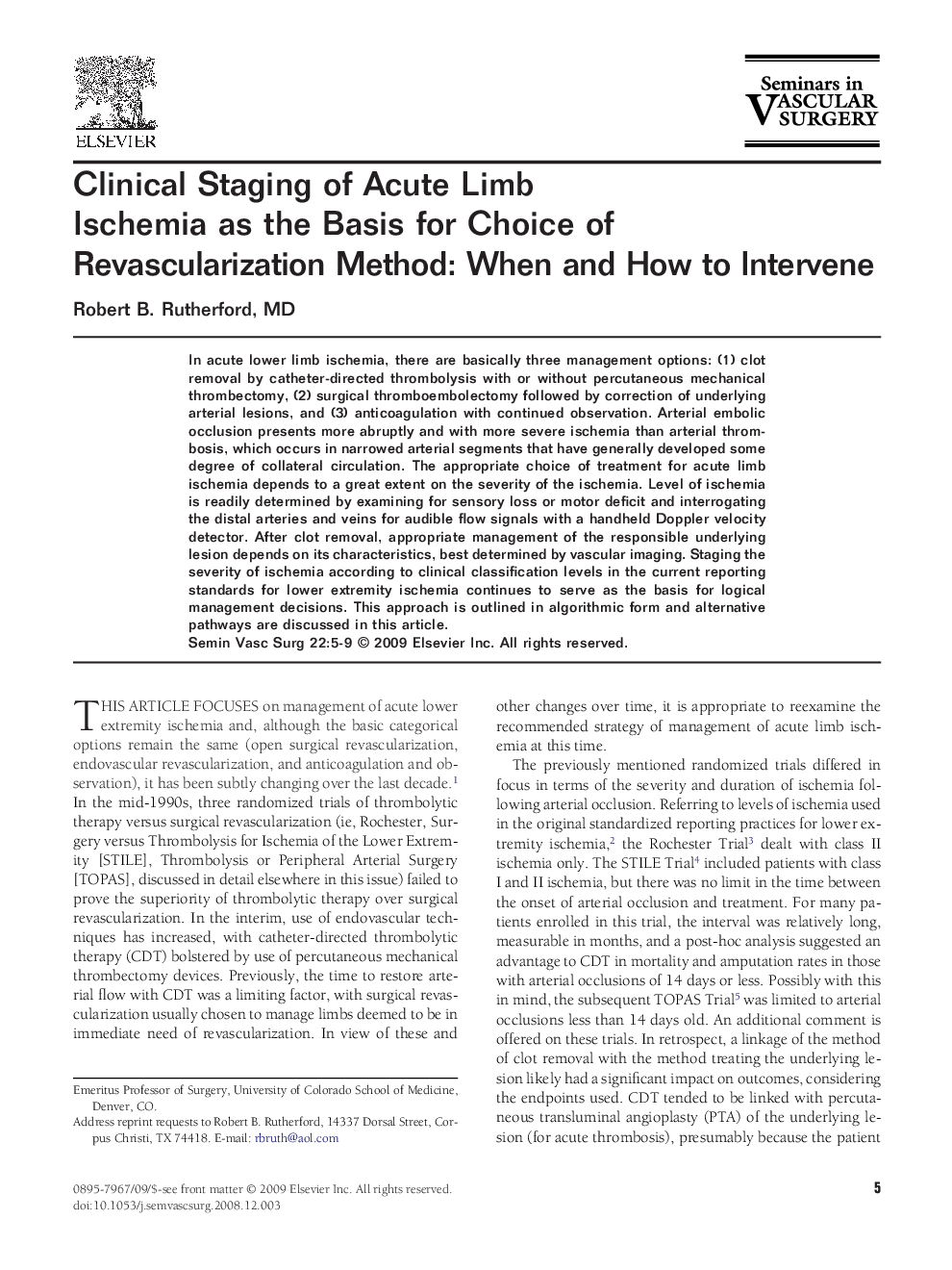| Article ID | Journal | Published Year | Pages | File Type |
|---|---|---|---|---|
| 3026262 | Seminars in Vascular Surgery | 2009 | 5 Pages |
In acute lower limb ischemia, there are basically three management options: (1) clot removal by catheter-directed thrombolysis with or without percutaneous mechanical thrombectomy, (2) surgical thromboembolectomy followed by correction of underlying arterial lesions, and (3) anticoagulation with continued observation. Arterial embolic occlusion presents more abruptly and with more severe ischemia than arterial thrombosis, which occurs in narrowed arterial segments that have generally developed some degree of collateral circulation. The appropriate choice of treatment for acute limb ischemia depends to a great extent on the severity of the ischemia. Level of ischemia is readily determined by examining for sensory loss or motor deficit and interrogating the distal arteries and veins for audible flow signals with a handheld Doppler velocity detector. After clot removal, appropriate management of the responsible underlying lesion depends on its characteristics, best determined by vascular imaging. Staging the severity of ischemia according to clinical classification levels in the current reporting standards for lower extremity ischemia continues to serve as the basis for logical management decisions. This approach is outlined in algorithmic form and alternative pathways are discussed in this article.
